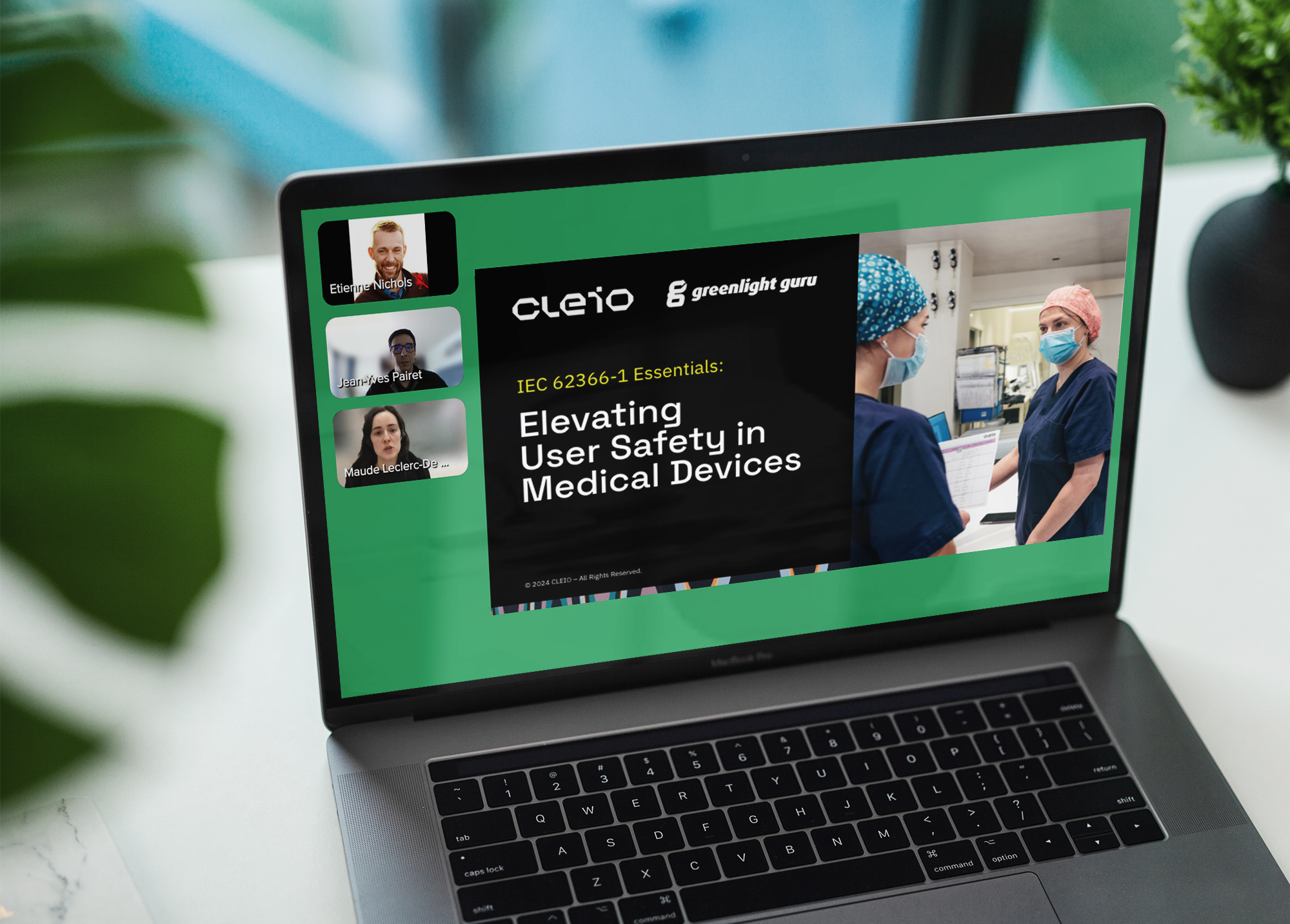
Rewatch the Webinar
IEC 623661 Essentials: Elevating User Safety in Medical Devices
- Session Recording: 1h20
When developing a medical device, user safety is an aspect that must not be overlooked. Usability engineering, also known as human factors engineering, plays a crucial role in mitigating the use-related risks.
IEC 62366-1 is an essential document for integrating this discipline into the medical device development process. It coexists with other standards that complement and reinforce the regulatory framework for developing and bringing medical products to market.
What is the regulatory framework for medical device development?
What are the standards and guidelines for usability engineering?
In a recent webinar in partnership with Greenlight Guru, Senior Human Factors Specialist Maude Leclerc-De Guire and Quality Assurance Manager Jean-Yves Pairet addressed these questions to help provide clearer insights.
The Regulatory Framework for Medical Device Development
A Regulatory Framework that Evolves with Medical Innovations
The regulatory landscape faces the challenge of keeping pace with the innovations that are transforming the healthcare sector. With the introduction of new technologies, medical devices have become more intelligent and autonomous, yet they also feature more complex interfaces.
Additionally, the rise of at-home care has placed patients as the primary users. Consequently, devices must be sufficiently intuitive for non-professional caregivers and patients managing their own care, thereby minimizing use-related risks.
That’s why current regulations require a meticulous design process and rigorous testing from medical device manufacturers. In particular, they are committed to conducting thorough evaluations of the safety, efficacy and usability of their products to meet the stringent requirements of these regulations.
Applicable Standards for Medical Device Development
ISO 13485
21 CFR Part 820
ISO 14971
Depending on the specific characteristics of the medical device, a range of other standards and guidelines may come into play.
Key Standards and Guidelines for Usability and Human Factors Engineering
Human Factors Engineering: What Is It?
Usability engineering, also known as human factors engineering, plays an essential role in the design and development of medical devices. This discipline evaluates the extent to which a product can be used by specific users to achieve specific objectives effectively, efficiently, and satisfactorily in real-life use scenarios.
This understanding forms the basis for integrating usability into the product development process, particularly from a regulatory perspective.

Maude Leclerc-De Guire
Senior Human Factors Specialist at CLEIO
Applicable Standards for Usability Engineering
Standards establish a robust regulatory pathway that guides manufacturers in creating medical devices that not only meet clinical needs but also enhance the overall user experience. This ensures that devices are accessible, safe, and effective for all intended users.
The IEC 62366-1 Standard
The AAMI HE75 Standard
FDA Guidance "Applying Human Factors and Usability Engineering to Medical Devices (2016)"
Usability Engineering Focuses on Use-Related Risks
Usability engineering aims to minimize use-related risks, which are often at the heart of problems involving user interaction with medical devices. A primary concern of IEC 62366-1 is addressing use errors. As defined by the standard, “A use error is an incorrect or omitted action by the user that results in a different outcome than the manufacturer’s intent or the user’s expectation”.
- Perception errors
- Cognition errors
- Errors of action
The key question is how to integrate the activities recommended by IEC 62366-1 into the development process. This is what our two experts discuss in the second part of the webinar, available soon.
NEW EBOOK
10 things you need to know about IEC 62366-1 for Medical Device Development
Stop making costly Medical Device Development mistakes! 💥 Increased development times, improved sales, higher user satisfaction, those are just a few of the benefits of applying IEC 62366-1. Download our free guide made by experts.